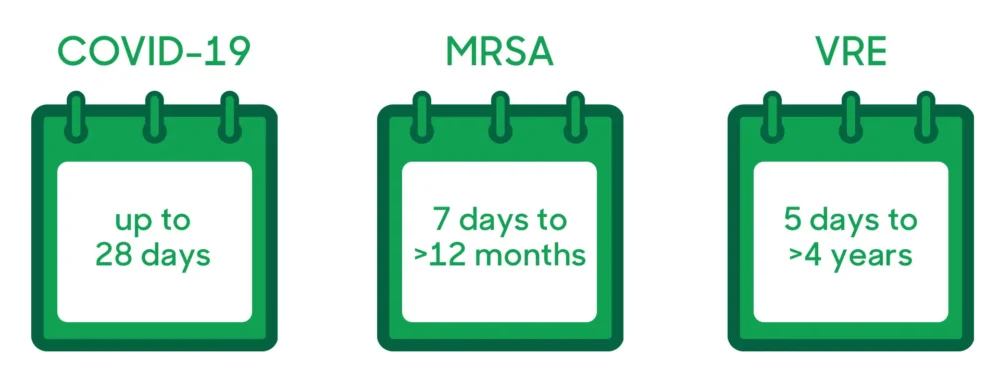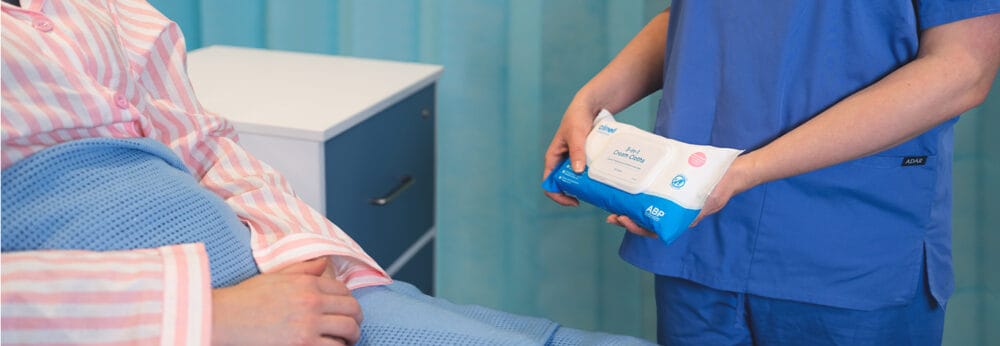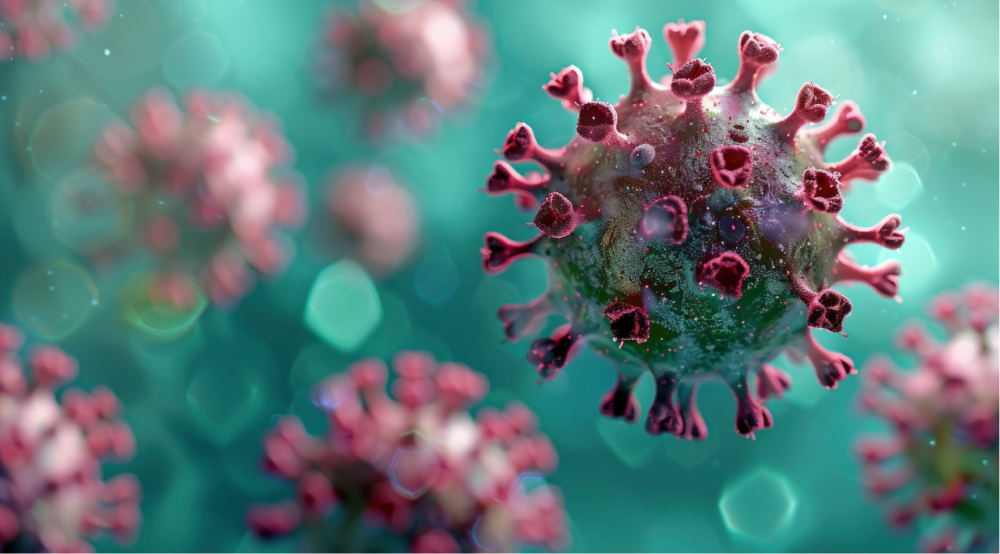Posted
29th September 2023
Research
High-touch surfaces are surfaces that are frequently touched by patients, residents, healthcare workers and visitors, which means they are more likely to become contaminated and act as a source of transmission of harmful pathogens.
High-touch surfaces include doorknobs, bedrails, light switches, remote controls, IV pumps and any other surface that may be frequently touched in the healthcare environment.
Secondary to their high risk of contamination, it is important that high-touch surfaces are regularly cleaned and/or disinfected (decontaminated) to decrease the risk of infection and keep patients, residents, staff and visitors safe.
Harmful pathogens can live for days, months and even years on surfaces, whilst still being able to cause infections. Survival times for common pathogens on surfaces include:

These alarming figures highlight the importance of best-practice decontamination protocols. Establishing a decontamination schedule ensures high-touch surfaces are cleaned regularly throughout the day, when visibly soiled and that all key areas are covered. Choosing a product that is effective against a broad spectrum of pathogens most commonly encountered in healthcare facilities, and following manufacturer’s instructions for use is crucial in ensuring eradication of pathogens on surfaces and in the healthcare environment.
Implementing monitoring and auditing programs to assess the effectiveness of cleaning practices can help identify areas for improvement. Decontaminating high-touch surfaces is a fundamental aspect of infection prevention and failure to maintain these surfaces can lead to the transmission of microorganisms.
For further information, we invite you to explore our campaign, IPC ‘Moments that Matter’, where you can find valuable resources. Find out more here >
References
Weinstein, R. A., & Hota, B. (2004). Contamination, Disinfection, and Cross-Colonization: Are Hospital Surfaces Reservoirs for Nosocomial Infection? Clinical Infectious Diseases, 39(8), 1182–1189. https://doi.org/10.1086/424667
Riddell, S., Goldie, S., Hill, A., Eagles, D., & Drew, T. W. (2020). The effect of temperature on persistence of SARS-CoV-2 on common surfaces. Virology Journal, 17(1). https://doi.org/10.1186/s12985-020-01418-7
Kramer, A., Schwebke, I., & Kampf, G. (2006). How long do nosocomial pathogens persist on inanimate surfaces? A systematic review. BMC Infectious Diseases, 6(1). https://doi.org/10.1186/1471-2334-6-130
SHARE THIS ARTICLE
Tags
Latest News
Advancing Continence Care with Clinell Contiplan: Expanded Indications, Pathways and Proven Outcomes
This World Continence Week, Clinell Contiplan 3-in-1 Cream Cloths introduce…
Celebrating 20 Years of GAMA Healthcare: Our Story
This month, GAMA Healthcare celebrates 20 years of helping prevent…
Norovirus and gastroenteritis outbreaks, the party ‘pooper’ you don’t want invited!
Recently, on 11 October 2024, NSW Health issued a health…
Clean Between to Reduce Healthcare-Associated Infections
Healthcare-associated infections (HAIs) are a significant concern for healthcare facilities…



